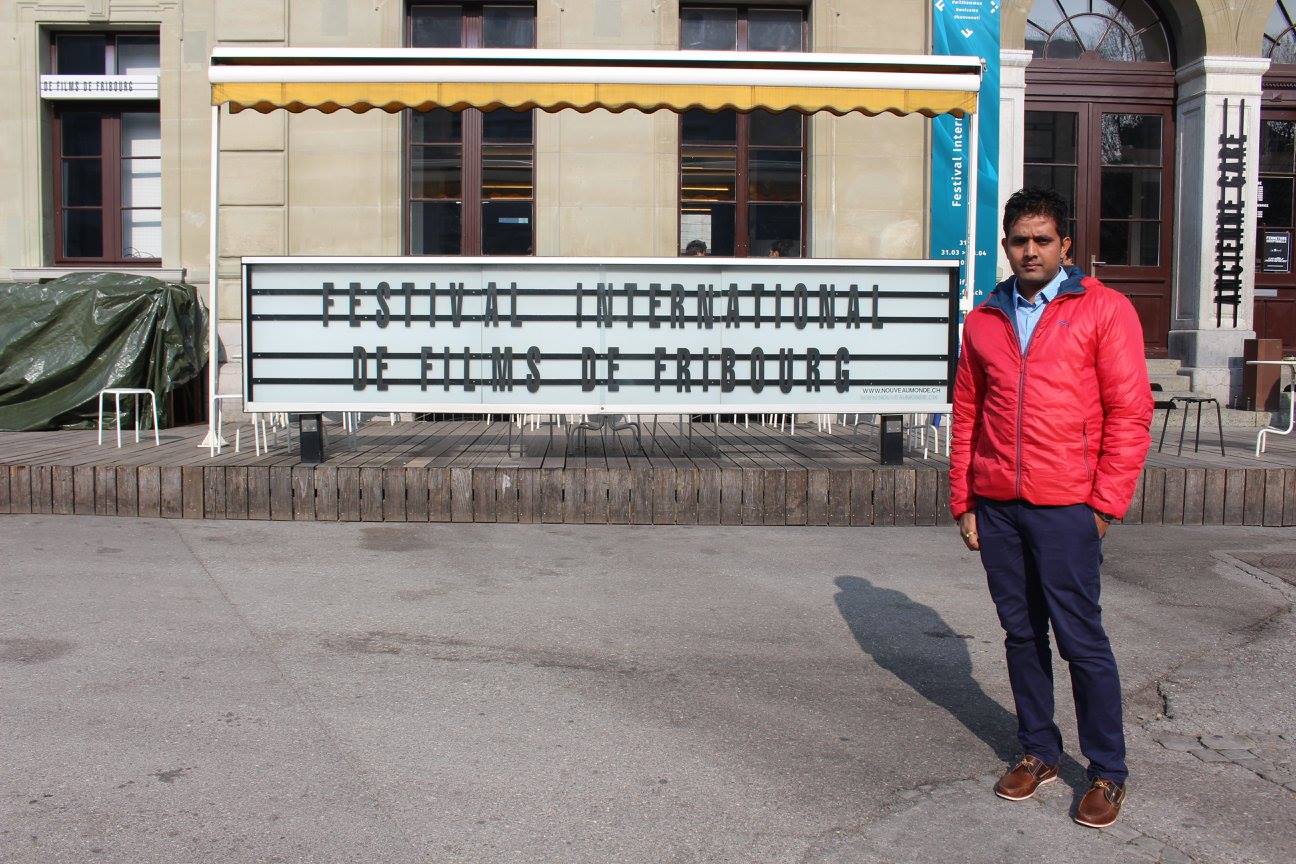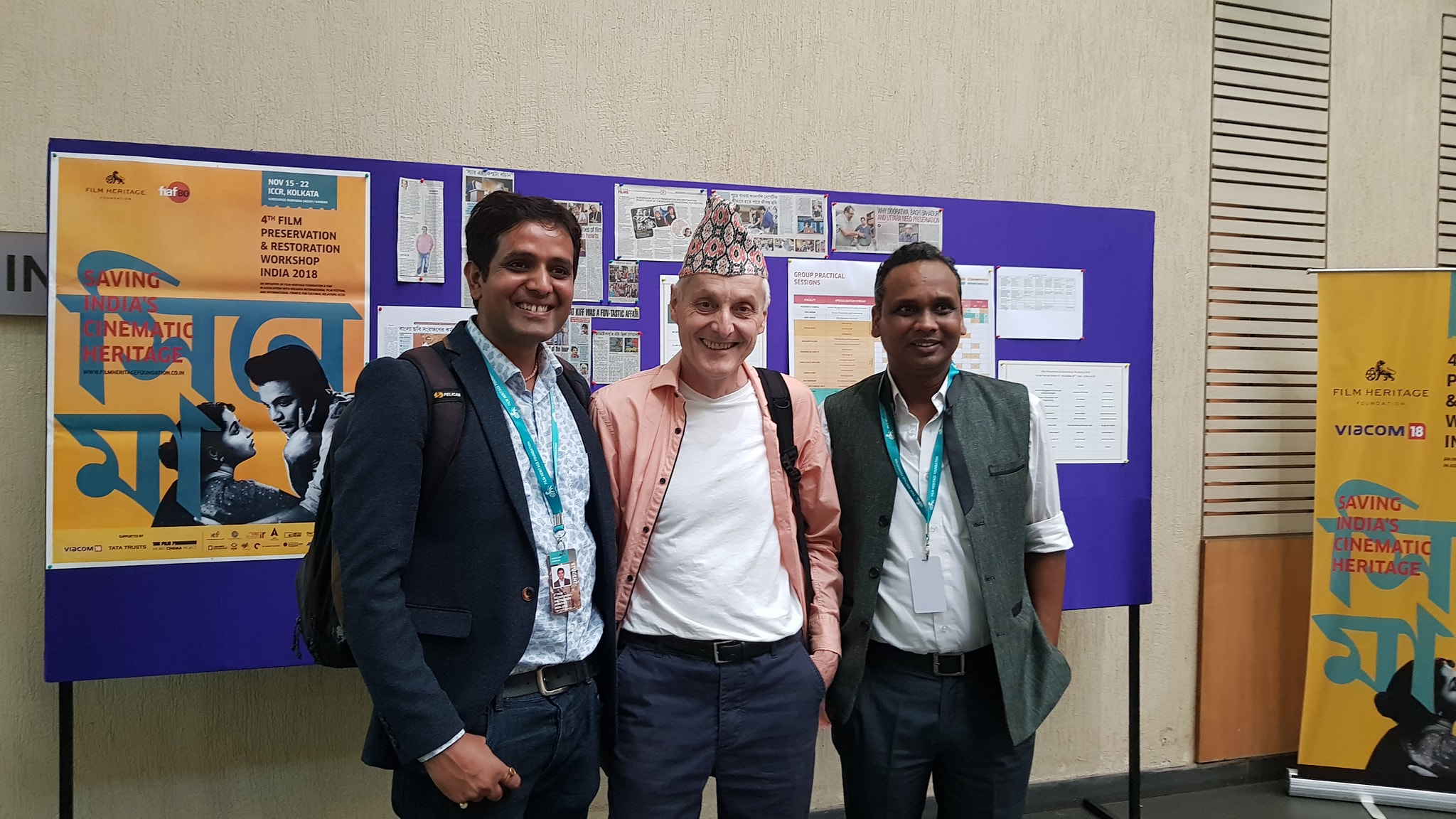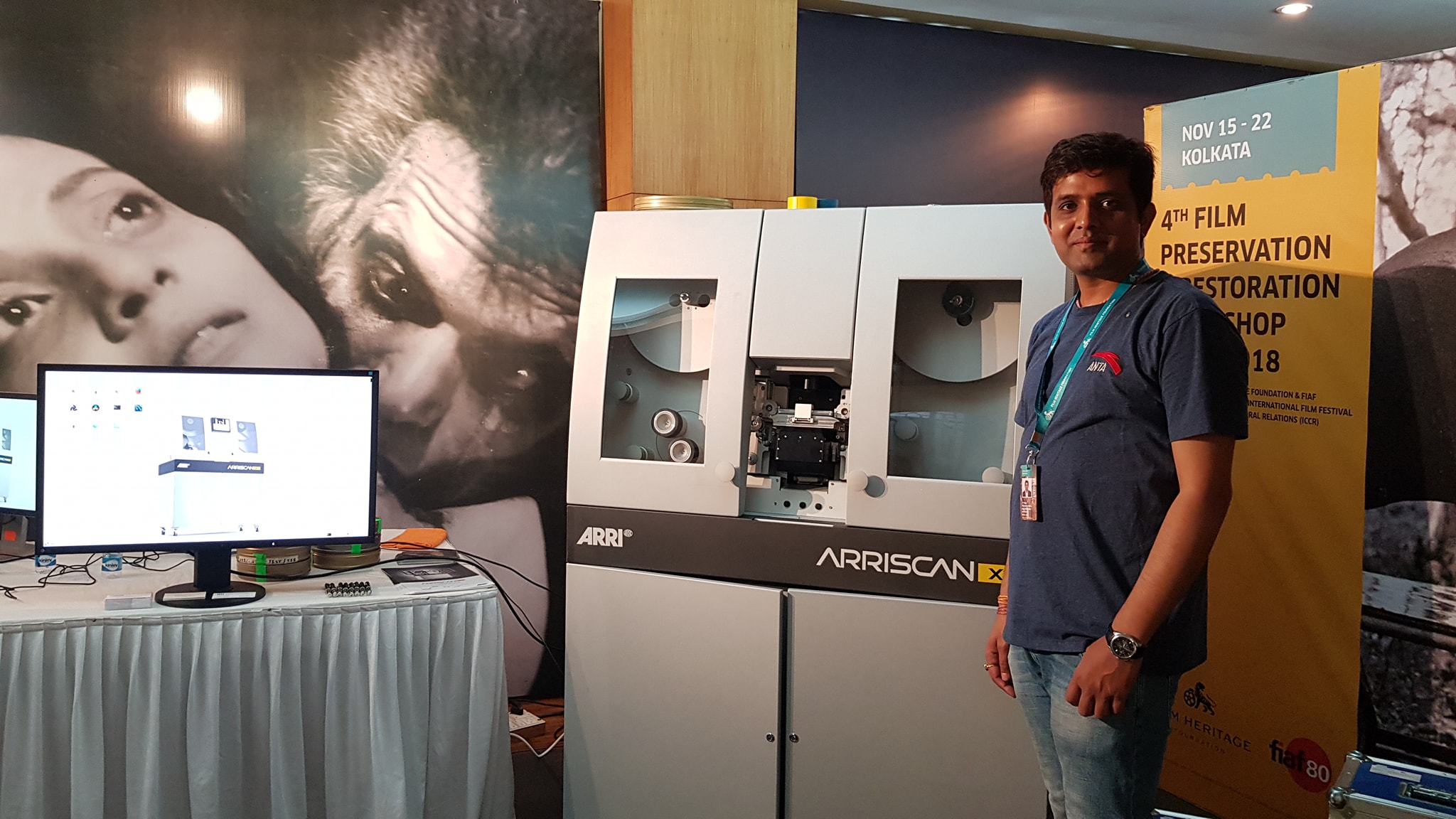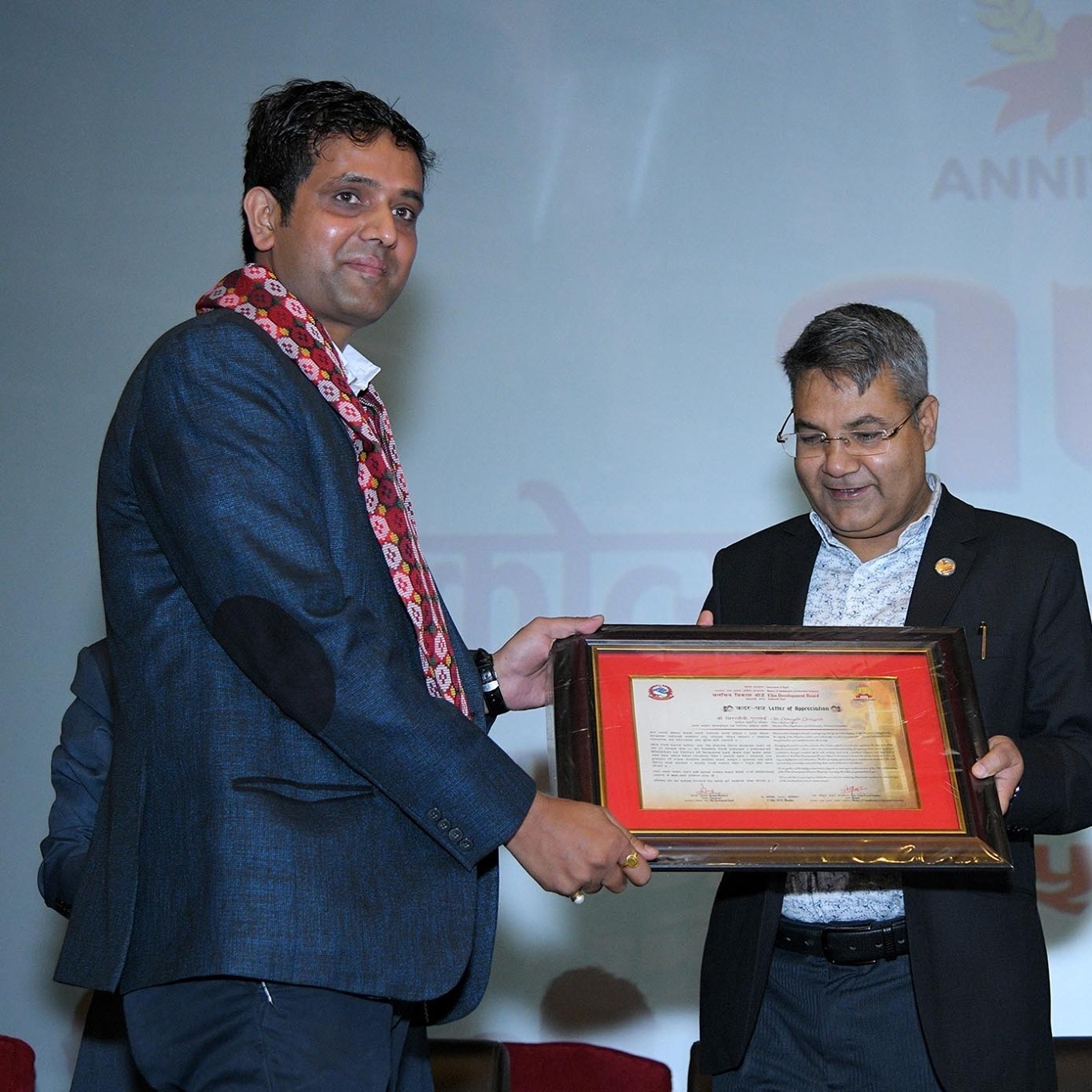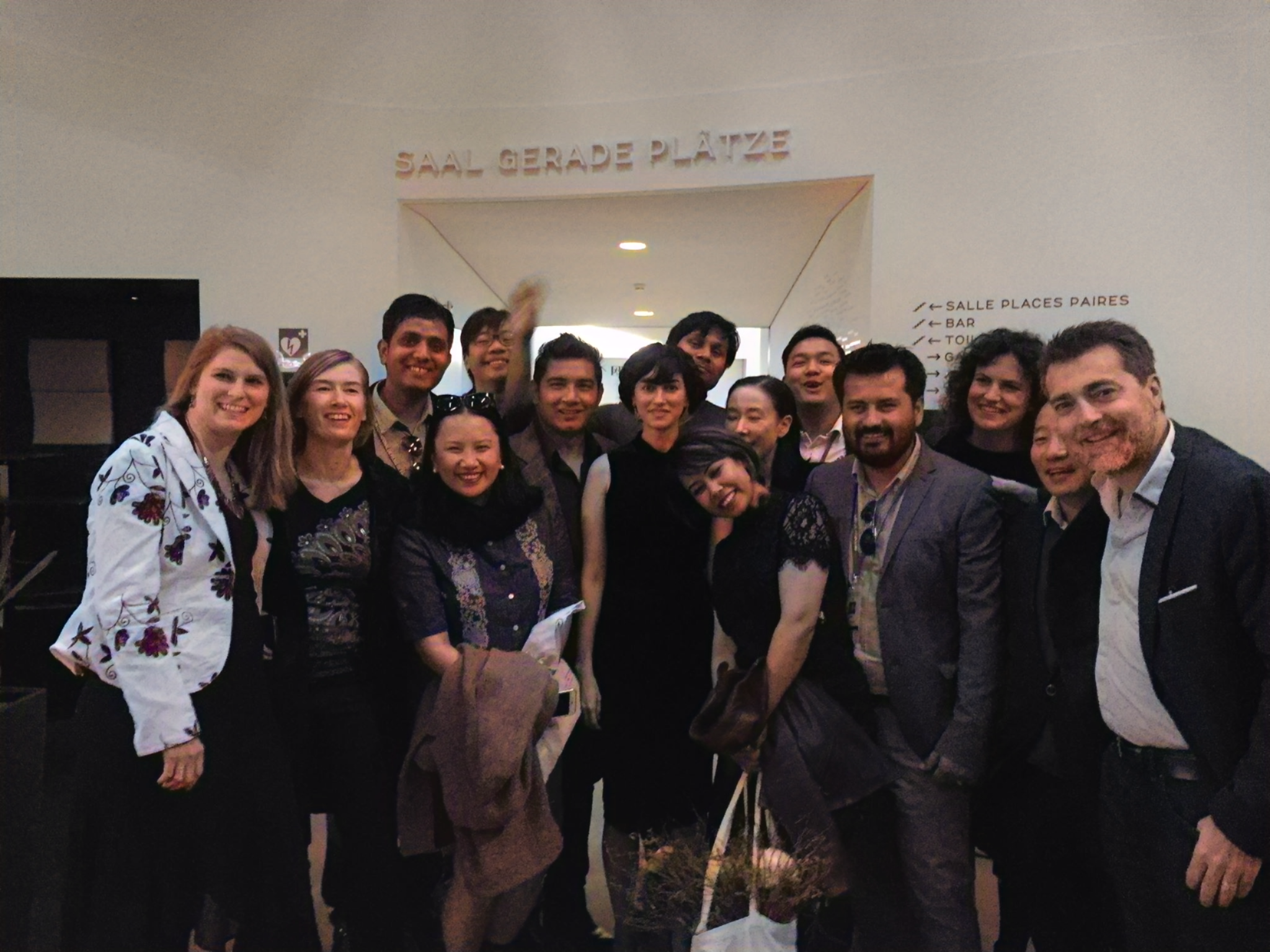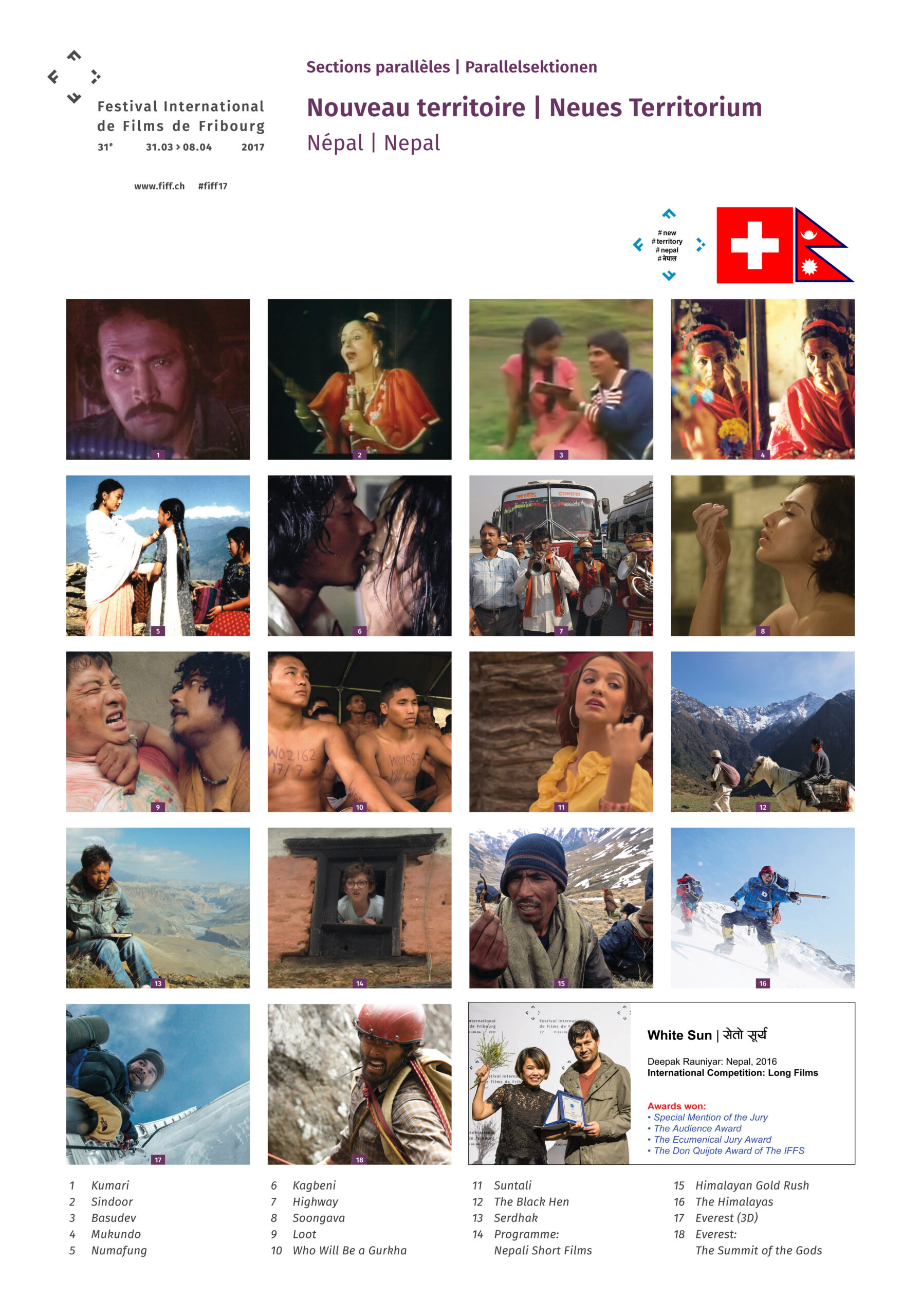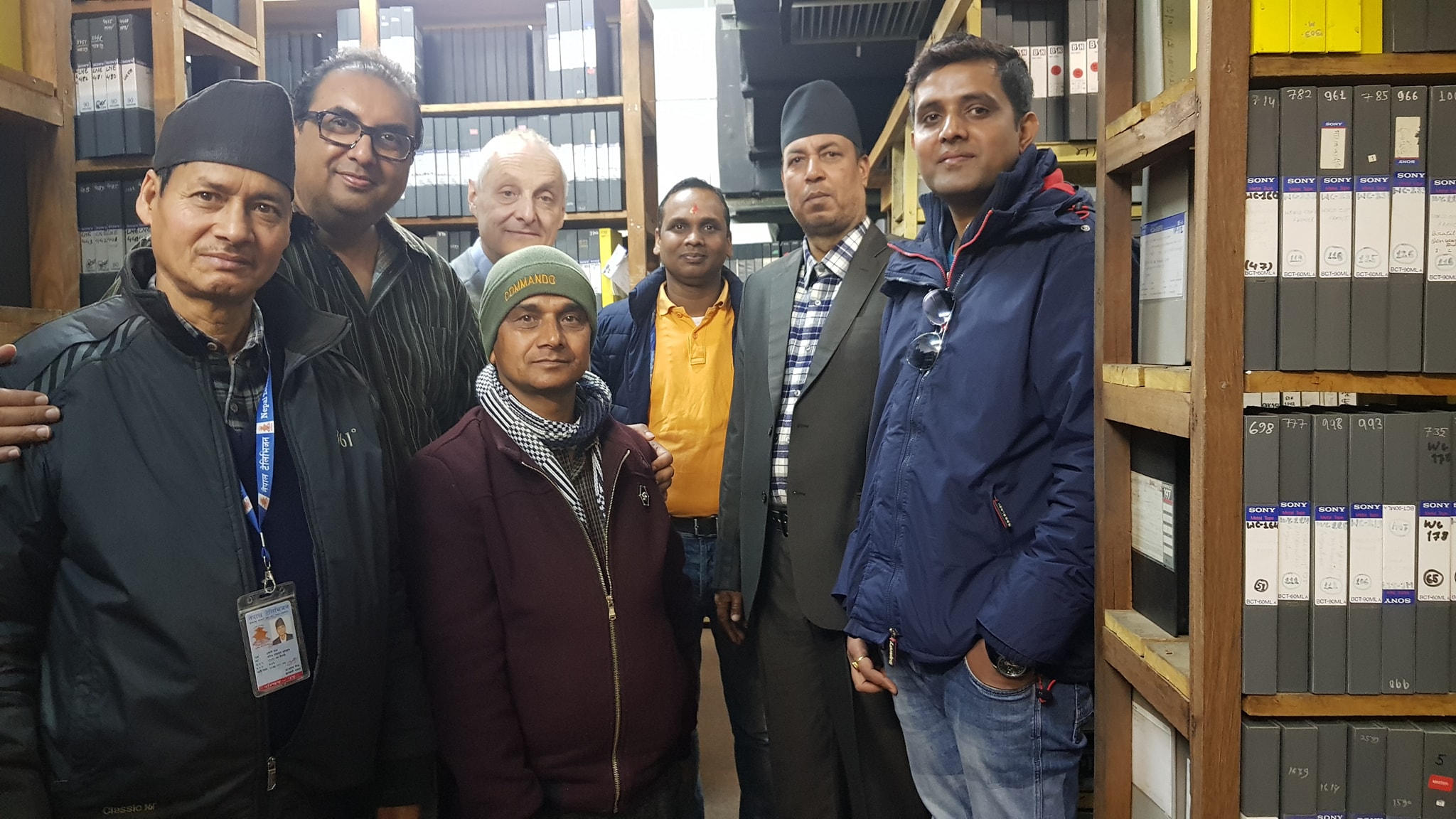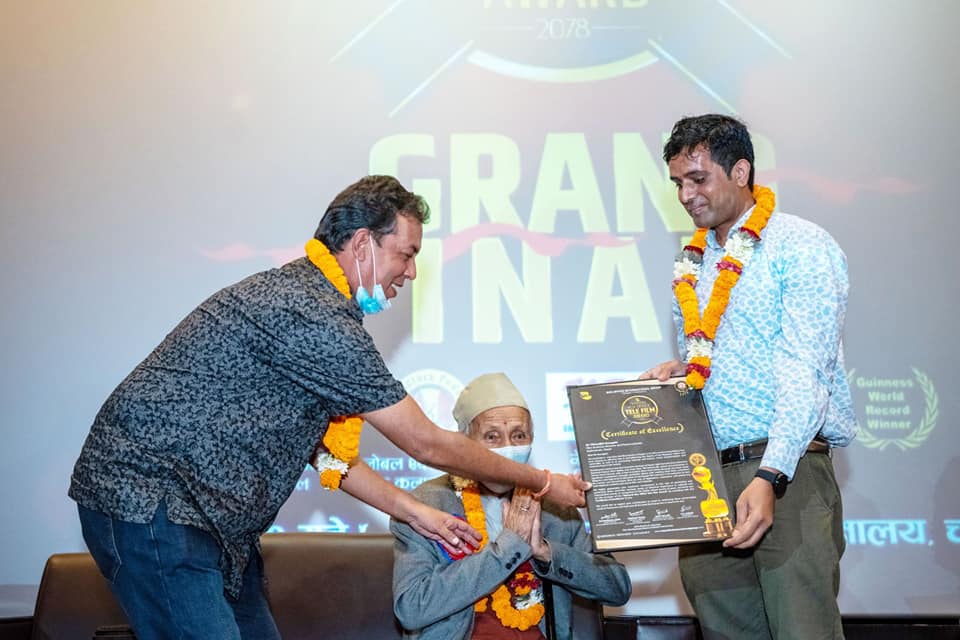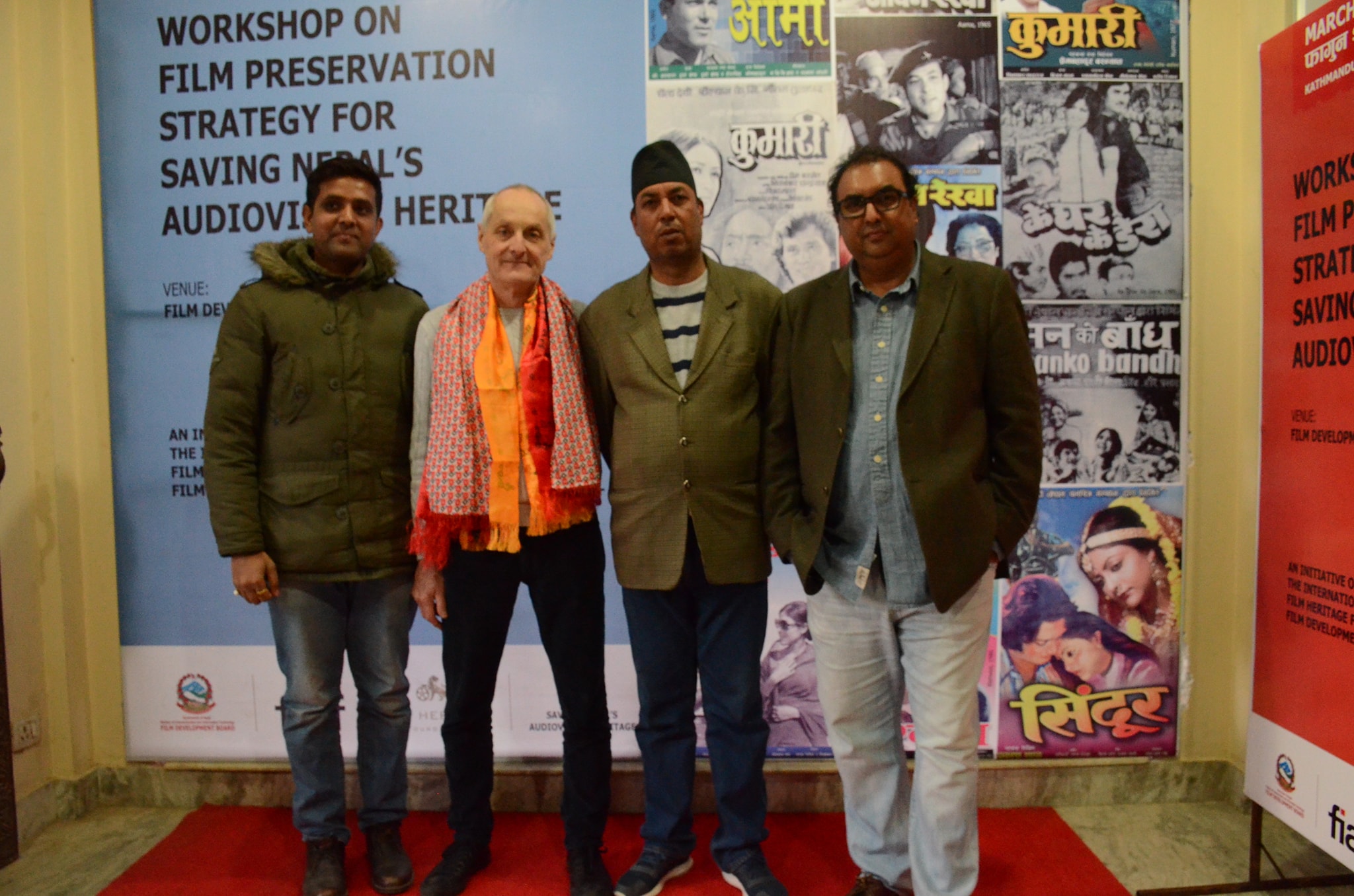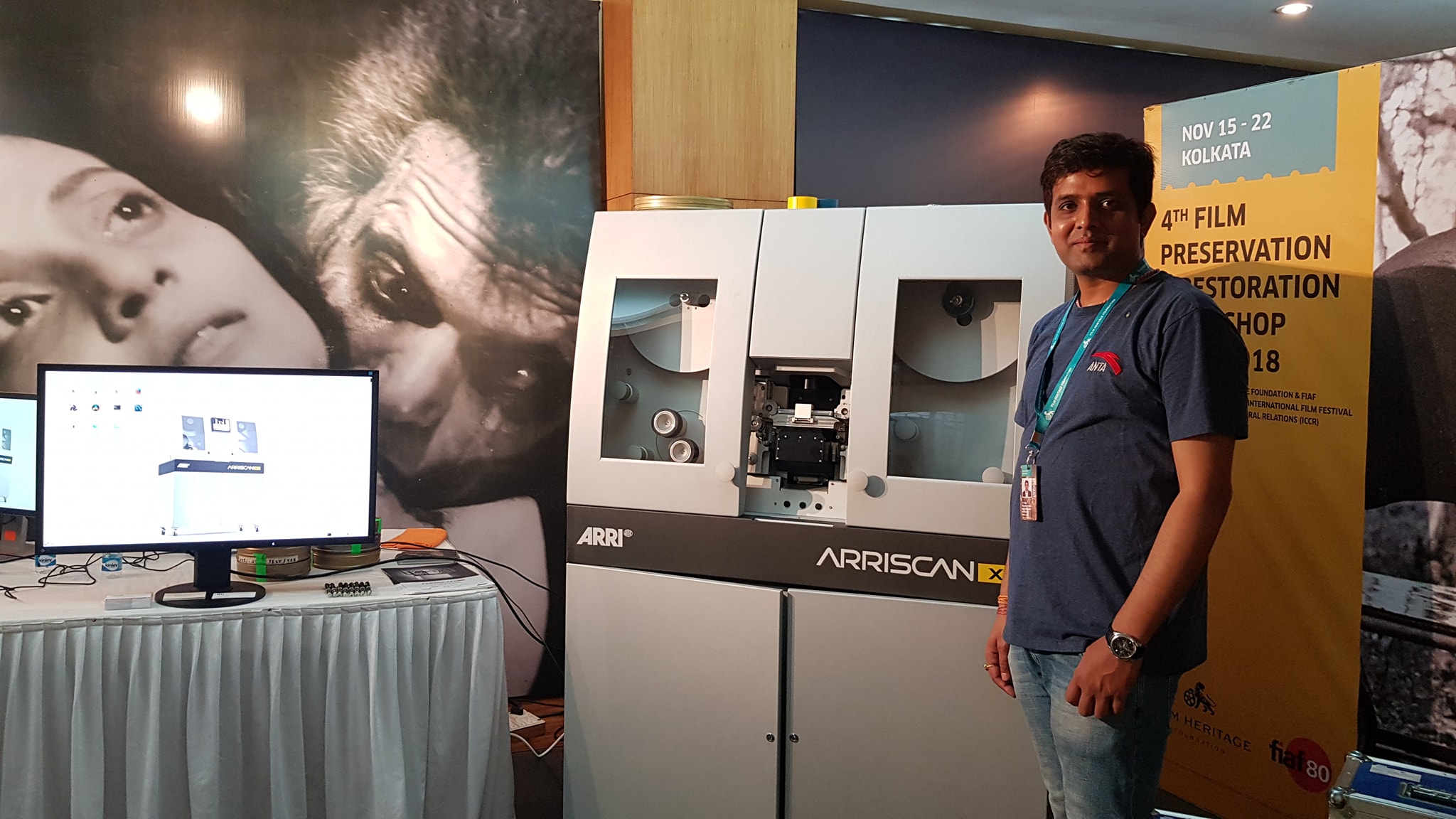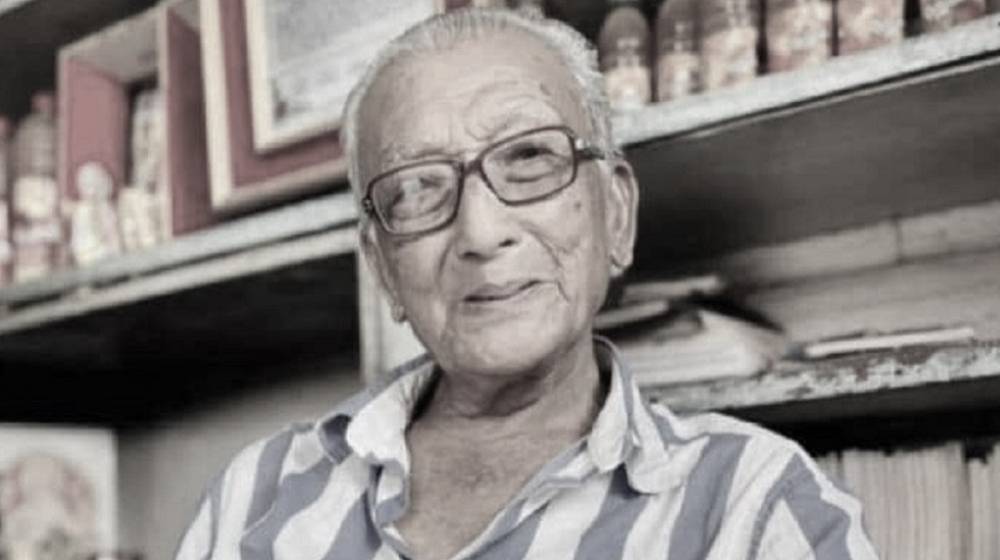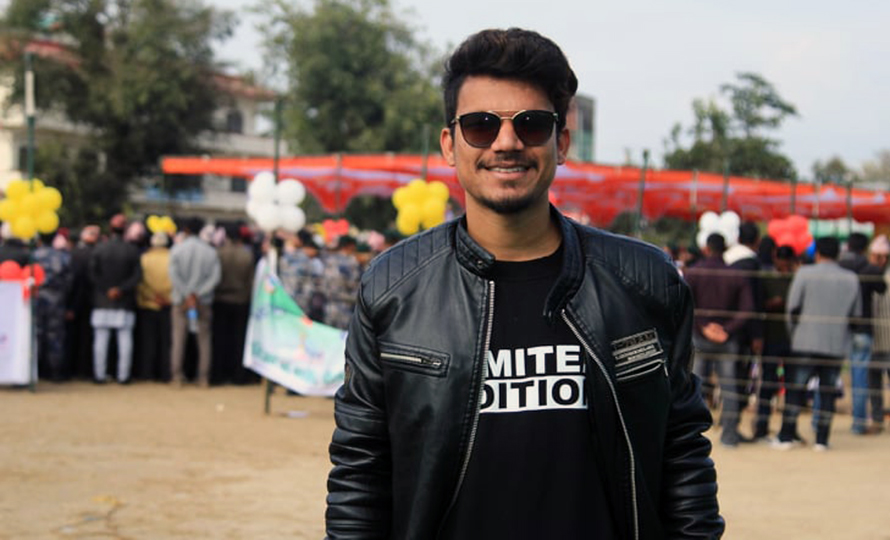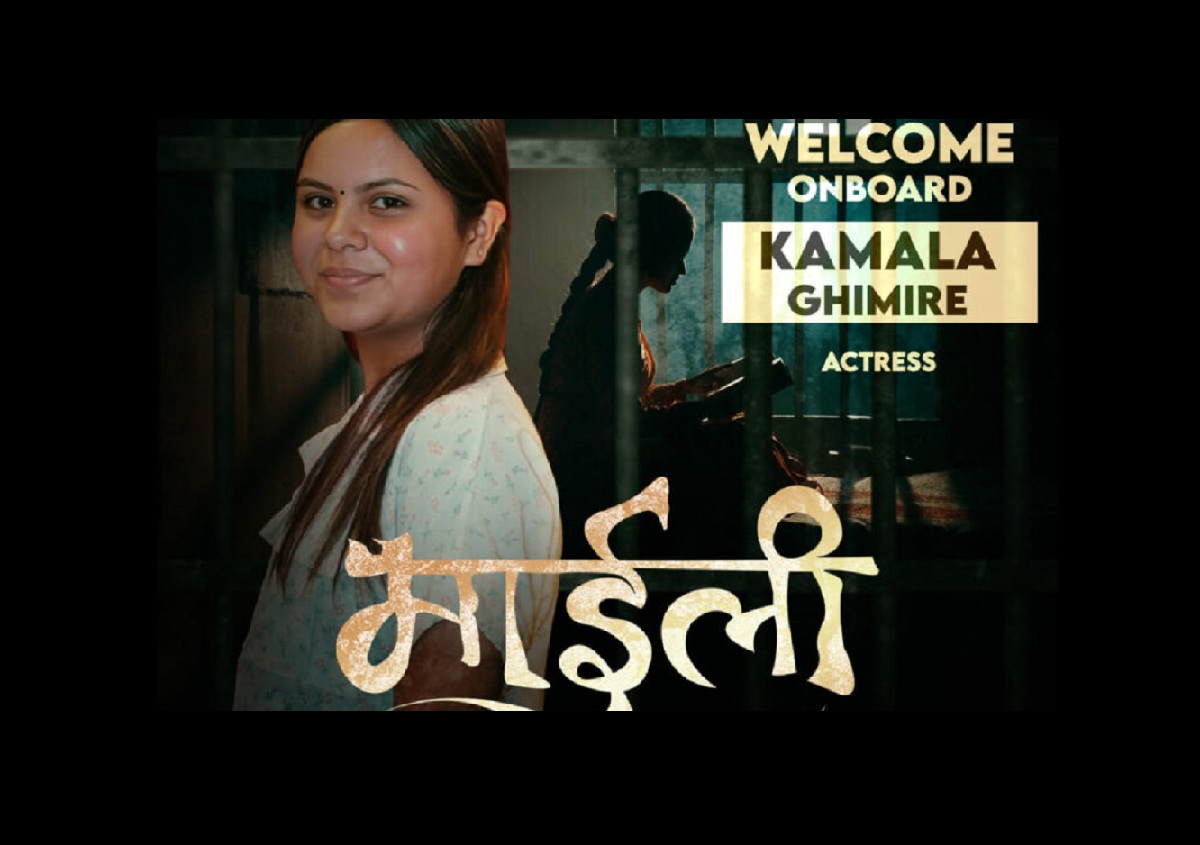Embarking the journey of film preservation and restoration of Nepal’s cinematic heritage
Guragain's efforts serve as a crucial step toward safeguarding our history, culture, and cherished memories, ensuring that future generations can continue to appreciate and learn from our cinematic heritage.

Chiranjibi Guragain, a nationally and internationally awarded film archivist, film digitization expert and restorer currently serving as the Film Archive Information Relations Officer at the Film Development Board, Nepal, shares his insights on the importance of digitizing and preserving films and provides an overview of his ongoing projects.
Recognizing the Value of Film Preservation in Nepal
Nepal is advancing in the global film industry, but it’s crucial to promote awareness of the importance of film preservation in our country. While Nepalis have a longstanding tradition of enjoying cinema, there’s a tendency to view film primarily as a commercial venture rather than appreciating its role as an integral art form representing our social and cultural heritage. Films also serve as invaluable visual records of our times, capturing the essence of our history.
Regrettably, this oversight has resulted in the loss of a substantial portion of our film heritage, a trend that continues even today. Insufficient attention has been devoted to maintaining comprehensive records of Nepali cinematic history. The collections of documentaries, newsreels, and feature films produced on celluloid formats remain largely unexplored, further emphasizing the urgent need for preservation efforts.
Chiranjibi Guragain’s dedicated work demonstrates a commitment to addressing this situation. Through his role at the Film Development Board, he is actively engaged in preserving and digitizing both feature films and documentaries, thereby contributing to the protection and celebration of Nepal’s rich cultural legacy.
Guragain’s efforts serve as a crucial step toward safeguarding our history, culture, and cherished memories, ensuring that future generations can continue to appreciate and learn from our cinematic heritage.
You’ve worked at the Film Development Board in Nepal. What initially drew you towards film preservation and restoration?
In November 2016, the Artistic Director of the Festival International de Films de Fribourg, Mr. Thierry Jobin, officially announced the organization of a special section called ‘New Territory: Nepal’ at the 31st edition of FIFF in Switzerland, scheduled for March 31 to April 8, 2017.
This section aims to showcase 20 long and short Nepalese films. Mr. Ram Krishna Pokharel and I (Chiranjibi Guragain) were tasked with curating a list of historically significant Nepali films and shorts to be featured at FIFF.
This endeavor proved to be quite challenging, as we had to locate either 35mm prints or digitally mastered copies of these films for the festival. The Film Development Board’s film archive contained prints of feature films produced by the Nepal government, but sadly, they were in critical condition and unsuitable for projection.
To address this, I had the opportunity to access the tape library archive of Nepal Television, which housed materials in formats such as UMATIC, Beta SP, miniDV, and VHS. After careful consideration, we selected ‘Sindoor,’ ‘Kumari,’ and ‘Basudev’ for the festival.
Notably, the UMATIC tapes were transferred from reels and served as an important part of the visual archiving landscape. UMATIC tapes, introduced in 1971, became the professional standard for broadcast industry edit masters in the 1970s. Beta SP, another high-quality analog video format released in 1986, split luminance and chrominance into alternating channels, enhancing horizontal resolution to 340 lines. This technological advancement made Beta SP the dominant format in the broadcast industry during the 1980s.
The real challenge emerged in finding a Beta SP tape player, recorder, and converter to provide the festival organizers with digital content. Ultimately, we located a player capable of converting Beta SP content to miniDV. From there, the film content was transformed into a digital format, upscaled to HD (1920 x 1080), and subtitled in English. This high-quality digital source was used for screening at the FIFF’s ‘New Territory: Nepal’ section.
The festival was a resounding success, drawing international viewers, particularly Swiss audiences, who attended almost every screening. It was a remarkable experience to witness the love for Nepali cinema among international viewers.
Following our success at FIFF, veteran film director and actor Mr. Neer Shah proposed the idea of organizing a Nepali Film Festival in India.
Pune International Centre (PIC) took the initiative and hosted this festival, titled ”In the Lap of the Himalayas: A Festival of Films from Nepal,” at the National Film Archive of India (NFAI) from July 28 to July 31, 2017. This event aimed to pay tribute to Nepal’s cinema and serve as a platform for showcasing Nepali films on both national and international stages. Twelve Nepali films were selected for this program, some of which also represented Nepal as official entries to the Academy Awards.
During my time at NFAI for the festival, colleagues suggested that I attend an upcoming workshop on film restoration, preservation, and digitization. This workshop was organized by the Film Heritage Foundation in collaboration with the International Federation of Film Archives (FIAF) and was scheduled to take place in October 2017 at Prasad Labs in Chennai, India.
The Film Heritage Foundation, established by Shivendra Singh Dungarpur in 2014, is a not-for-profit organization dedicated to supporting the conservation, preservation, and restoration of the moving image, as well as promoting awareness of the language of cinema. Being a member of the International Federation of Film Archives (FIAF) since 2015, the Film Heritage Foundation is the sole non-governmental organization in India working in the field of film preservation.
Fortunately, I received a scholarship from FIAF to attend the ‘Film Preservation and Restoration Workshop, India 2017.’ This workshop proved to be a turning point in my career, as it paved the way for me to work as a film archivist and preservationist in Nepal.
It also marked the initiation of our first digitization and restoration project, focusing on preserving the history of Nepali features, documentaries, and newsreels produced by the Nepal government.
Over a two-year period, we successfully digitized ten feature films and approximately 100 documentaries and newsreels, all in 4K resolution. Subsequent restoration work was carried out in 2K format for final preview in theaters. Additionally, the content was digitally mastered in DCI DCP 2K format for screenings and subtitled in English.
This journey has been incredibly fulfilling, and it has strengthened my commitment to preserving and restoring Nepal’s rich cinematic heritage.
Which film’s restoration work has given you the most satisfaction, and why?
We take pride in choosing to restore hidden gems and films at risk of being forgotten or lost. Among the recent restorations, we find immense satisfaction in the restoration of ten feature films produced by the Nepal government, including the first-ever Nepali film, ‘Aama (The Mother),’ and the first color film, ‘Kumari,’ alongside other notable titles like ‘Hijo Aaja Bholi,’ ‘Paribartan,’ ‘Sindoor,’ ‘Ke Ghar Ke Dera,’ ‘Shanti Deep,’ ‘Badlindo Aakash,’ ‘Jeevan Rekha,’ and approximately 100 documentaries.
The restoration process for these films was exceptionally challenging, requiring nearly two years of painstaking manual work. This was primarily due to the poor condition of the multiple-source film elements. Countless hours were dedicated to digital restoration, clean-up, grain management, and color correction for each film. Maintaining fidelity to the original creators’ vision was paramount, necessitating constant coordination between cinematographer Manju Kumar Shrestha, who worked on ‘Man Ko Bandh,’ ‘Kumari,’ and ‘Ke Ghar Ke Dera,’ colorist and editor Lokendra Parajuli ‘Kapil,’ and myself for all ten feature films.
We faced the challenge of sourcing alternative materials from the Film Development Board archive, where some materials were mixed up without proper titles. Mr. Manju Kumar Shrestha and I personally combed through the entire archive collection to locate these alternative sources, ensuring the completion of the features. Another hurdle was finding sound sources for the films, as most of the sound negatives had suffered damage. We used Beta SP copies of the films available at the Nepal Television Library as a secondary source to arrange audio for the films. These copies were originally mastered at 25 fps and had to be synchronized with the 24 fps film negative digitized content.
The restored versions of ‘Aama,’ ‘Kumari,’ and ‘Ke Ghar Ke Dera’ have been showcased at various venues and festivals, including the Children’s Film Festival in Dang and the Women in Cinema event jointly organized by the British Council and the Film Development Board. This experience brought me immense satisfaction, especially because the actresses from our first film, Mrs. Bhuwan Chand, and Mrs. Basudhara Bhusal, expressed their gratitude and appreciation for the extensive work we undertook during this extended period.
Additionally, the veteran actor Mr. Neer Bikram Shah was elated to see his very first camera-facing scene in ‘Paribartan.’ These events not only validate our efforts but also provide a deep sense of fulfillment in our mission.
What are the current projects you are working on?
We are currently involved in several restoration projects, which encompass the digitization and restoration of significant Nepali cinema milestones such as “Maitighar,” “Basudev,” “Mukundo,” “Numafung,” “Silu,” and more. Additionally, we are actively engaged in collecting films from the Nepal Film Development Company Limited, Balaju, which houses an extensive collection of over 200 feature film negatives and sound negatives. Our mission is dedicated to “Saving Nepal’s Audio Visual Heritage.”
Furthermore, I recently had the opportunity to visit the film archives of the National Film Board of Canada in Montreal and the Film Preservation Centre of the Library and Archives of Canada in 2023. This visit aimed to gain insights into the latest technologies and best practices for establishing controlled conditions film preservation storage vaults in Nepal.
What motivates you to work in this sector?
I find great motivation in the recognition, awards and accolades I’ve received from esteemed organizations such as the Film Heritage Foundation, FIAF, and various national associations. They have awarded and honored me for my unwavering dedication and significant contributions to the digitization, restoration, and preservation of historic Nepali cinema reels, all of which are now part of the archive at the Film Development Board, Nepal.
The Film Heritage Foundation presented me with the prestigious ‘Champions of Film Heritage Award’ in acknowledgment of my initiation of a digitization project aimed at preserving Nepal’s film heritage. This notable international award was personally handed to me by renowned actor Boman Irani in the presence of film archivists around the globe during the opening ceremony of the 7th Film Preservation & Restoration Workshop India 2022, held on Dec 4th, 2022, at Regal Cinema, Mumbai.
This recognition is a testament to my commitment to safeguarding Nepal’s rich film heritage and my dedication to building upon the knowledge and training I acquired as an FIAF scholar at the Film Preservation & Restoration workshops in India. I was also from the President of Nepal Mrs Bidhya Devi Bhandari for my work with “Extraordinary Services Award (Film Archive and Digitization)” on the occasion of National Film Award and Lifetime Achievement Award Distribution Ceremony at President House.
These awards and honors serve as a constant source of motivation, inspiring me to continue my work in the field of film preservation with even greater enthusiasm and dedication.
How can we improve the climate and create more favorable conditions for the preservation and restoration of films in Nepal?
Preserving and restoring films is crucial, but it often faces challenges due to insufficient funding and resources. While individuals do contribute materials, financial support remains limited. It’s essential for legacy producers and copyright holders to actively participate in preserving these valuable assets. Moreover, contemporary filmmakers should integrate preservation considerations into their budgets.
Archiving born-digital content involves safeguarding digital materials from their inception. This process ensures the secure storage and accessibility of digital information, including documents, images, videos, and other digital assets, for future reference and historical preservation.
Born-digital archiving employs various techniques and technologies to manage, organize, and protect these digital records, guaranteeing their long-term availability and usability.
In my role as the Film Archive Information and International Relations Officer at the Film Development Board, I am dedicated to establishing a dedicated National Film Storage vault in Nepal.
This facility will house our historic film collection, comprising 16 mm and 35 mm film reels, in controlled conditions to ensure their preservation. This collection includes films produced by the Nepal government, private companies, and individual collectors.
I have also invited two international experts, David Walsh from the International Federation of Film Archives (UK) and Shivendra Singh Dungarpur, Chairman of the Film Heritage Foundation, to organize a workshop titled ‘Strategy of Saving Audio Visual Heritage of Nepal’ at the Film Development Board in March 2019.
Additionally, I was invited as a moderator for a panel discussion on ‘Archiving Nepal’s audio-visual heritage’ at the Nepal International Film Festival 2022.
The discussion involved government and non-governmental representatives actively engaged in preservation projects. Our dialogue emphasized the significance of archives and their integration into public engagement initiatives.
By preserving these films, both celluloid film reels, digitized or restored contents and also the born digitals, we are safeguarding our history, culture, and cherished memories.
To truly enhance the preservation and restoration efforts, it is imperative that both the central and local governments allocate adequate funds and launch initiatives aimed at preserving current events for the benefit of future generations.
Photos:-
